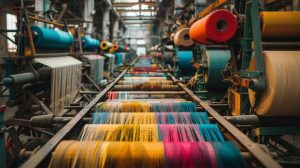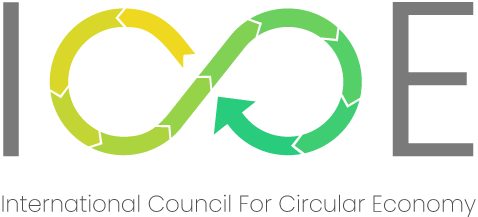
06/02/2025
It’s now official! The textile industry is ONLY 0.3% circular. Being one of the world’s largest economic sectors it produces 3.25 billion tonnes of materials annually. However, its reliance on a linear “take-make-waste” model leads to overproduction, waste, and environmental degradation. The latest Circularity Gap Report: Textiles, by Circle Economy states that over 99% of materials sourced from virgin resources. This glaring inefficiency calls for urgent systemic change.
Overproduction and Overconsumption
The fashion industry exemplifies the pitfalls of the linear model. Fast fashion brands produce up to 24 collections annually, with 30% of garments going unsold. This overproduction is driven by cheap synthetic materials and subsidized fossil fuels. Simultaneously, global per capita fibre consumption has risen from 8.3 kilograms in 1975 to 14.6 kilograms in 2022, exacerbating resource depletion.
Environmental Footprint
The textile sector contributes significantly to climate change, water scarcity, and pollution. Key issues include:
- Greenhouse Gas Emissions: Material production and finishing processes account for 55% of the industry’s emissions.
- Water Use: Dyeing and finishing require approximately 93 billion cubic meters of water annually, often in water-scarce regions.
- Waste: Around 61.4% of textile waste is incinerated or sent to landfills, where it releases methane and toxic chemicals.
Social Impacts
The industry employs 140 million people, many in informal, low-wage roles with hazardous working conditions. Women disproportionately bear the brunt of these challenges, earning significantly less than their male counterparts.
Moving Towards Circularity
To transform the industry, systemic interventions and collaborative efforts are essential. Below are actionable strategies for making the textile industry circular and reducing waste:
- Prioritize Circular Design
Circular design ensures that products are made to last and can be reused, repaired, or recycled. Key steps include:
- Durable Materials: Using high-quality fibers to extend garment lifespans.
- Modular Design: Creating products that can be disassembled for easier repair or recycling.
- Recyclable Inputs: Incorporating natural or recycled materials over synthetics.
- Promote Slow Fashion
The fast fashion model needs a paradigm shift toward slow fashion, which values quality over quantity.
- Fewer Collections: Reducing annual collections to lower overproduction.
- Customer Education: Encouraging mindful consumption and emphasizing the environmental costs of fast fashion.
- Advance Recycling Technologies
Current recycling rates in textiles are dismal, with only 0.3% of materials recycled in a closed-loop system. Investments in:
- Chemical Recycling: Breaking down textiles into their chemical components for reuse.
- Mechanical Recycling: Shredding and re-spinning fibers while minimizing quality degradation.
- Implement Extended Producer Responsibility (EPR)
EPR policies hold manufacturers accountable for the lifecycle of their products, encouraging:
- Take-Back Programs: Brands collecting used items for repair or recycling.
- Transparency: Tracking materials to ensure they re-enter production cycles.
- Develop Regional Supply Chains
Localizing production reduces transportation emissions and supports regional economies. Key measures include:
- Decentralized Production: Shifting from global to regional supply chains to reduce dependency on fossil fuels.
- Natural Fibers: Encouraging sustainable local fiber production, such as organic cotton or hemp.
- Foster Collaboration Across Sectors
Circularity requires alignment between policymakers, businesses, and consumers.
- Policy Frameworks: Governments can introduce mandatory circular practices, such as textile recycling targets.
- Public-Private Partnerships: Collaboration between brands and regulators to build recycling infrastructure.
- Engage Consumers
Educating consumers about circular practices is crucial for success.
- Awareness Campaigns: Highlight the environmental impact of fast fashion.
- Incentives: Discounts or rewards for participating in take-back schemes.
Circularity in Action
- H&M Foundation: The H&M Foundation has invested in initiatives to reduce greenhouse gas emissions and promote textile recycling technologies. Their projects target high-emission stages of the value chain, including material production.
- Timberloop: Timberland’s take-back program collects worn items, repairs or recycles them, and rewards participants with discounts. Such programs exemplify how brands can integrate circularity into their operations.
- Local Initiatives in Ghana: Second-hand clothing markets like Ghana’s Kantamanto Market highlight how reuse can generate economic opportunities. However, regulating such systems ensures environmental and social benefits are maximized.
Barriers to Circularity and Solutions
- Limited Recycling Infrastructure: Most regions lack the facilities needed to process textile waste effectively.
Solution: Governments and businesses should invest in state-of-the-art recycling plants and establish global standards for textile recycling. - Market for Recycled Materials: Recycled textiles often struggle to compete with cheaper virgin materials.
Solution: Subsidies for recycled materials and penalties for using virgin resources can level the playing field. - Informal Workforce Challenges: Many workers lack the skills needed for circular processes.
Solution: Training programs can upskill informal workers, particularly in repair and recycling roles.
The textile industry’s current trajectory is unsustainable, but a transition to circularity offers a path to economic, environmental, and social resilience. By embracing durable design, reducing overproduction, scaling recycling technologies, and fostering collaboration, the industry can address its wasteful practices and align with global sustainability goals. Implementing these strategies requires immediate action, robust policy support, and collective responsibility. By transforming waste into wealth and prioritizing circularity, the textile industry can lead the charge in creating a sustainable future.

Founder and Managing Director
International Council for Circular Economy
